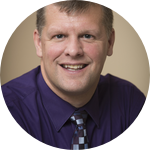About This Project
Center distance soft bifocal contact lenses slow the progression of nearsightedness. However, most soft bifocal contact lenses are center near, and the only daily disposable (ideal for young children) soft bifocal contact lenses are center near. This study will compare the changes in nearsightedness between 12 and 13 year old nearsighted children randomly assigned to wear either center near soft bifocal or single vision (regular) contact lenses.Ask the Scientists
Join The DiscussionWhat is the context of this research?
Soft bifocal contact lenses have the reading power either in the outer portion (center distance) or in the center of the contact lens (center near). Most soft bifocal contact lenses are center near, and the only daily disposable soft bifocal contact lenses available are center near. Daily disposable contact lenses eliminate the need for cleaning, lower the risk of eye infections, and provide fresh lenses on the eyes daily.
However, center near soft bifocal contact lenses have never been tested to see if they slow the progression of nearsightedness like center distance soft bifocal contact lenses. If they do, children will have several more options to slow the progression of nearsightedness, including daily disposable contact lenses, which are more convenient and safer for children.
What is the significance of this project?
One out of three adults in the US is obese, and obesity is an epidemic. Similarly, one out of three people in the US is myopic (nearsighted), and that number is increasing.
High myopia is associated with a greater risk of sight-threatening conditions, such as retinal detachment (inner portion of the eye comes off and leads to blindness), choroidal atrophy (blood supply of the eye is disrupted and leads to blindness), and glaucoma (a leading cause of blindness). Furthermore, patients with high myopia have fewer treatment options that cost more and have greater side effects.
Therefore, myopia control with soft bifocal contact lenses could potentially provide more cost-effective treatment, preserve sight, and ultimately prevent the onset of a very common vision condition.
What are the goals of the project?
The goals of this project are:
1. to determine whether myopic children fit with center near soft bifocal contact lenses exhibit slower myopia (nearsightedness) progression than those fit with regular contact lenses;
2. to determine whether myopic children fit with center near soft bifocal contact lenses exhibit slower eye growth than those fit with regular contact lenses; and
3. to determine whether where light focuses within the eye is related to how much the progression of myopia is slowed.
Ultimately, this will tell doctors whether they should recommend daily disposable soft bifocal contact lenses to slow the natural progression of nearsightedness in children and how to maximize the slower eye growth by learning about how light focus in the eye may influence the progression of myopia.
Budget
Contact lens companies cannot provide lenses for this study, so we need to pay for a year supply of contact lenses for each participant.
Meet the Team
Team Bio
Dr. Walline is a world-renowned scientist, studying contact lenses for children. He has shown that some contact lenses slow the progression of nearsightedness, that children who wear contact lenses feel better about their athleticism, appearance, and interactions with friends. His research has also shown that children and teens require similar time to fit, exhibit similar benefits, and share similar risks. Since teens are routinely fit with contact lenses, why not children?Dr. Smith received her Optometry degree from The Ohio State University College of Optometry in 2014, and she pursuing an Advanced Practice Fellowship in contact lenses. Her Master's thesis research is represented by this study and requires your support to "make it happen." Funding of this scientific investigation will help children experience contact lens wear, may make them less nearsighted than they would have been without the study, and helps a student obtain a Master's degree. Donations help everyone!
Lab Notes
Nothing posted yet.
Additional Information
This study only happens with your support. Thank you for considering!!Project Backers
- 13Backers
- 8%Funded
- $1,500Total Donations
- $115.38Average Donation

